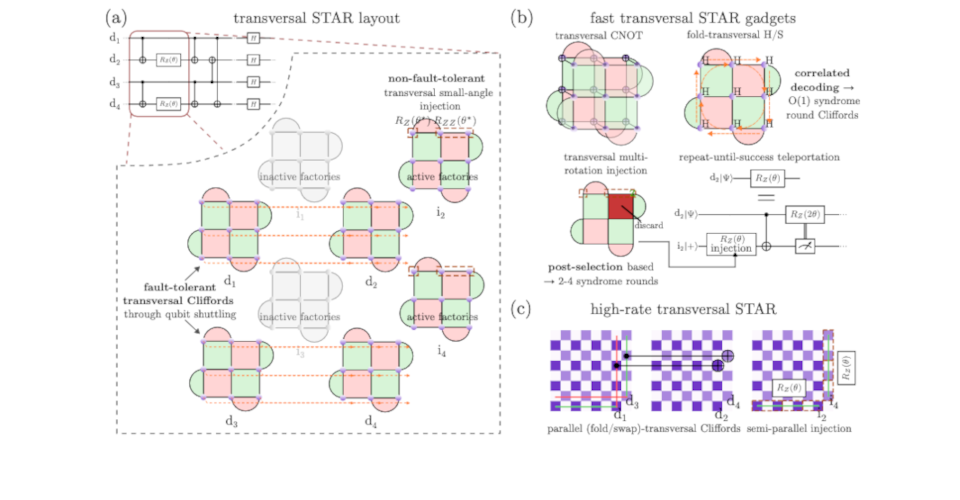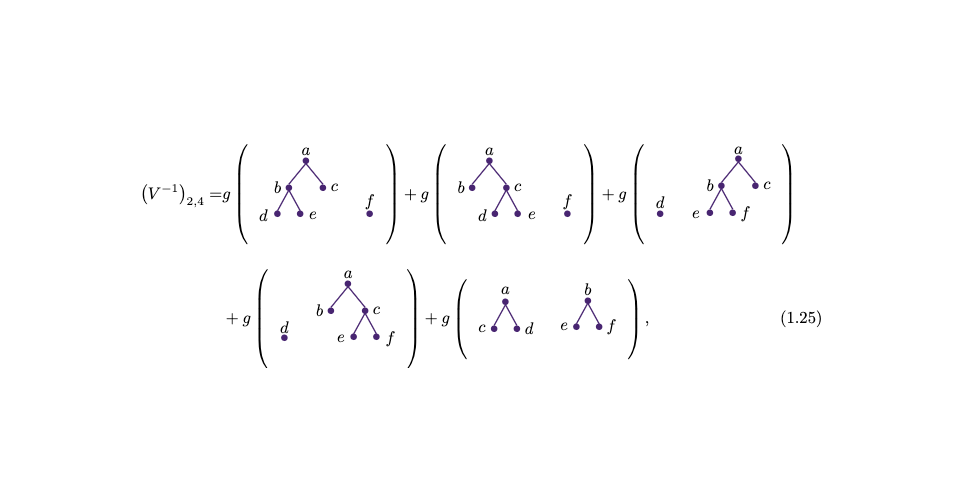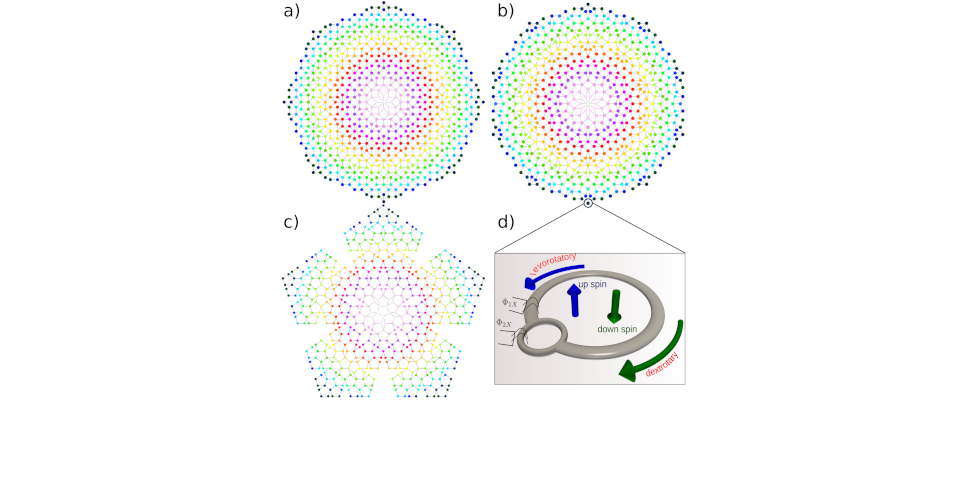 |
Center for Nonlinear Studies |
 |
Quantum computation (QC) holds out tremendous promise for efficiently solving some of the most difficult problems in computational science, such as integer factorization, discrete logarithms, and quantum modeling that are intractable on any present or future conventional computer. New concepts for QC implementations, algorithms, and advances in the theoretical understanding of the physics requirements for QC are occurring at an increasingly rapid pace.
Los Alamos National Laboratory has a broad portfolio in QC ranging from studies of materials used in QC to the study of applications. Some of these efforts include:
- Los Alamos National Laboratory is proud to be a member of the Testing and Evaluation team for DARPA’s Quantum Benchmarking Initiative. In this role, Los Alamos National Laboratory supports the US Government in assessing the viability and usefulness of emerging quantum computing technologies. For more information about the Quantum Benchmarking Initiative, visit https://www.darpa.mil/QBI.
- Quantum Science Center (QSC): The QSC is one of five National Quantum Initiative Science Research Centers. LANL has been a member of the QSC since 2020 and continues to be a member since its recent renewal in 2025. Our work for the QSC at LANL has covered research in quantum algorithms, quantum sensing, experimental quantum materials, and the experimental study of quantum systems, more generally. This work will continue with some changes in scope through the renewal with continued work in quantum algorithms, quantum applications of quantum simulation for the study of spin materials, and experimental work in quantum spin systems.
- Advanced Simulation and Computing (ASC) program: The NNSA’s ASC program supports quantum computing via its Beyond Moore’s Law project, which focuses on quantum algorithms and quantum information theory. Recent new funding has also supported quantum error correction for early fault-tolerance and access to high-fidelity quantum computers.
- Quantum Algorithms and Quantum Information: Quantum algorithms and information theory form the conceptual core of quantum computing, defining what problems are solvable and how quantum advantage can be realized and verified. Some of the topics covered by the interdisciplinary teams of scientists at Los Alamos are: quantum algorithmic primitives, hybrid quantum-classical algorithms, error mitigation, error correction, quantum thermodynamics, open quantum systems, quantum resource theories, dynamical quantum simulation, quantum machine learning, quantum annealing, benchmarking, applications in chemistry, applications in materials science, applications in optimization, and applications in high-energy physics as well as in quantum sensing.
- Quantum Materials: The intersection between QIS and Quantum Materials is twofold. One, we aim to utilize quantum materials for developing novel quantum hardware to be used in QIS technologies. Second, we aim to use existing QIS technologies to discover, understand, and control quantum matter.
- Materials modeling techniques
- Materials Experiment
- Thrust 1: Discovery, Understanding, and Control of Quantum Matter
Quantum Matter is matter whose property of interest requires the use of quantum mechanics. Thus, understanding, creating, and controlling quantum matter enables predictive performance – a critical component of LANL’s materials strategy. This thrust encompasses the development of new tools and capabilities for discovering, understanding, and controlling quantum matter at the forefront of LANL’s existing leadership areas in the Materials Pillar. This includes high-field science, light-matter interactions, atomic systems, reduced dimensional systems, and f-electron materials as well as the discovery of new states of matter and phenomena especially at the intersection of topology and strong correlations. - Thrust 2: Quantum Matter for Quantum Hardware
Current materials have fundamental constraints that prevent their scalability to achieve the technological needs of envisioned quantum technologies. By developing an integrated vision from novel materials discovery to imaginative device implementation we can develop the capacity to meet the National security needs of tomorrow. Several investments in this area of strength simultaneously benefits LANL’s QIS and microelectronics strategies. To achieve this goal the discovery and development of new approaches and capabilities for quantum matter for tomorrow’s quantum devices is required. This includes building fabrication capabilities to create devices of interest to the LANL community that go beyond CMOS technology as well as creating hardware elements for various quantum applications (e.g. computing, simulation, sensing, communication, etc.). (CINT has strong nanofabrication capabilities but is not designed to exploit the materials development where LANL leads.)
The Center for Integrated Nanotechnologies CINT and the pulsed field facility of the National High Magnetic Field Lab National High Magnetic Field Laboratory-PFF | LANL that contribute significantly to LANL's efforts in quantum materials.
- Thrust 1: Discovery, Understanding, and Control of Quantum Matter
LANL has a vibrant research program, visitor initiative, and presence in the quantum community, through efforts such as:
- The CNLS-sponsored Quantum Lunch series: https://cnls.lanl.gov/External/quantumlunch.php
- The Quantum Computing Summer School: https://www.lanl.gov/engage/collaboration/internships/summer-schools/quantumschool
- The Los Alamos Quantum Materials Summer School
- Participation in conferences such as IEEE Quantum Week, the APS March meeting, QIP, and SQUINT
Recent and Upcoming Talks:
| Wed, Oct. 1st 10:00 AM - 11:00 AM Antonio Anna Mele (Freie Universitat Berlin) Quantum Lunch: VIRTUAL - A complete theory of the Clifford commutant |
To advertise a quantum seminar through CNLS, please email cnlsoffice@lanl.gov with the title, abstract, bio, date, time, and location (including any virtual options).
Recent Publications
- Tate, R.; Gupta, S.. Comparison of Hyperplane Rounding for Max-Cut and Quantum Approximate Optimization Algorithm over Certain Regular Graph Families. 2025 10.48550/arXiv.2509.24108
- Adam Burchardt; Jiani Fei; Dmitry Grinko; Martin Larocca, et al. High-dimensional quantum Schur transforms. 2025 10.48550/arXiv.2509.22640
- Ismail, R.; Chen, I.; Zhao, C.; Weiss, R., et al. Transversal STAR architecture for megaquop-scale quantum simulation with neutral atoms. 2025 https://doi.org/10.48550/arXiv.2509.18294
- Pelofske, E.; Rams, M., Bärtschi, A.; Czarnik, P., Braccia, P.; Cincio, L., et al. Evaluating the Limits of QAOA Parameter Transfer at High-Rounds on Sparse Ising Models With Geometrically Local Cubic Terms. 2025 10.48550/arXiv.2509.13528
- Rule, E.; Chernyshev, I., Stetcu, I.; Carlson, J.; Weiss, R.. Recursive algorithm for constructing antisymmetric fermionic states in first quantization mapping. 2025 https://doi.org/10.48550/arXiv.2509.07279
- Pechan, A.; Golden, J.; O'Malley, D.. Block encoding the 3D heterogeneous Poisson equation with application to fracture flow. 2025 10.48550/arXiv.2508.07125
- Feeney, S.; Tate, R.; Golden, J.; Eidenbenz, S.. MPS-JuliQAOA: User-friendly, Scalable MPS-based Simulation for Quantum Optimization. 2025 10.48550/arXiv.2508.05883
- Lopez-Bezanilla, A.. Magnetic devil's staircaselike behavior in quasiperiodic qubit lattices. 2025 10.48550/arXiv.2507.18818
- Bittner, E.; Piryatinski, A.. Topology and Spectral Entanglement in Cavity-Mediated Photon Scattering. 2025 10.48550/arXiv.2509.15465
- Jenning, D.; , Korzekwa, K.; Lostaglio, M; Sornborger, A., et al. Quantum algorithms for general nonlinear dynamics based on the Carleman embedding. 2025 10.48550/arXiv.2509.07155
| Operated by the Triad National Security, LLC
for the National Nuclear Security Administration
of the US Department of Energy. Copyright © 2003 LANS, LLC | Disclaimer/Privacy |



